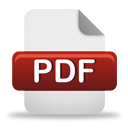

CLC number: TB51
On-line Access: 2024-08-27
Received: 2023-10-17
Revision Accepted: 2024-05-08
Crosschecked: 2021-04-07
Cited: 0
Clicked: 4857
Yan-cheng Wang, Cheng-yao Xu, De-qing Mei, Jia-wei Liu. Tunable patterning of microscale particles using a surface acoustic wave device with slanted-finger interdigital transducers[J]. Journal of Zhejiang University Science A,in press.Frontiers of Information Technology & Electronic Engineering,in press.https://doi.org/10.1631/jzus.A2000501 @article{title="Tunable patterning of microscale particles using a surface acoustic wave device with slanted-finger interdigital transducers", %0 Journal Article TY - JOUR
基于斜指换能器声表面波器件的微颗粒可调排布研究创新点:1. 提出了一种新的微颗粒排布方法,通过所设计的带斜指换能器的声表面波器件,在聚乙二醇二丙烯酸酯(PEGDA)中实现对微颗粒的可调排布.2. 建立了微颗粒排布过程的有限元仿真模型,研究了声表面波的产生、传递和PEGDA中声压场的分布,以及分析了微颗粒的可调排布原理.3. 通过施加不同频率的激励信号,可实现同一液层中不同位置、不同间隙规律的粒子排布. 方法:1. 为了在PEGDA中实现对微粒子的可调排布,设计一种带斜指换能器的声表面波器件,并采用该装置实现不同周期、宽度、位置的微颗粒排布;2. 建立声-结构耦合的时域仿真模型对斜指换能器的声表面波器件中声表面波的产生、传递及PEGDA中声压场的分布进行研究;3. 通过实验研究,验证不同频率激励信号对粒子排布周期、宽度和位置的影响,证明该方法的有效性和灵活性. 结论:1. 所提出的基于带斜指换能器声表面波器件的微颗粒排布方法,实现了PEGDA中排布周期从83.9 μm到116.4 μm变化、宽度从710 μm到1145 μm变化的可调粒子排布;2. 微颗粒排布周期和宽度随所施加激励信号频率的增加而减小,且排布周期约等于该频率激励信号所激发声表面波波长的一半;3. 通过相继施加不同频率的激励信号,可以在液层不同区域形成不同的粒子排布并同时保留,互不干扰. 关键词组: Darkslateblue:Affiliate; Royal Blue:Author; Turquoise:Article
Reference[1]Ai Y, Sanders CK, Marrone BL, 2013. Separation of Escherichia coli bacteria from peripheral blood mononuclear cells using standing surface acoustic waves. Analytical Chemistry, 85(19):9126-9134.  [2]Aubry N, Singh P, Janjua M, et al., 2008. Micro- and nanoparticles self-assembly for virtually defect-free, adjustable monolayers. Proceedings of the National Academy of Sciences of the United States of America, 105(10):3711-3714.  [3]Bian YS, Guo F, Yang SJ, et al., 2017. Acoustofluidic waveguides for localized control of acoustic wavefront in microfluidics. Microfluidics and Nanofluidics, 21:132.  [4]Bruus H, 2012. Acoustofluidics 2: perturbation theory and ultrasound resonance modes. Lab on a Chip, 12(1):20-28.  [5]Chen P, Luo ZY, Güven S, et al., 2014. Microscale assembly directed by liquid-based template. Advanced Materials, 26(34):5936-5941.  [6]Cho S, Kang S, Pandya A, et al., 2017. Large-area cross-aligned silver nanowire electrodes for flexible, transparent, and force-sensitive mechanochromic touch screens. ACS Nano, 11(4):4346-4357.  [7]Collins DJ, Morahan B, Garcia-Bustos J, et al., 2015. Two-dimensional single-cell patterning with one cell per well driven by surface acoustic waves. Nature Communications, 6:8686.  [8]Devendran C, Albrecht T, Brenker J, et al., 2016. The importance of travelling wave components in standing surface acoustic wave (SSAW) systems. Lab on a Chip, 16(19):3756-3766.  [9]Ding XY, Shi JJ, Lin SCS, et al., 2012. Tunable patterning of microparticles and cells using standing surface acoustic waves. Lab on a Chip, 12(14):2491-2497.  [10]Dual J, Möller D, 2012. Acoustofluidics 4: piezoelectricity and application in the excitation of acoustic fields for ultrasonic particle manipulation. Lab on a Chip, 12(3):506-514.  [11]Hermanson KD, Lumsdon SO, Williams JP, et al., 2001. Dielectrophoretic assembly of electrically functional microwires from nanoparticle suspensions. Science, 294(5544):1082-1086.  [12]Lee B, Oh JY, Cho H, et al., 2020. Ultraflexible and transparent electroluminescent skin for real-time and super-resolution imaging of pressure distribution. Nature Communications, 11(1):663.  [13]Llewellyn-Jones TM, Drinkwater BW, Trask RS, 2016. 3D printed components with ultrasonically arranged microscale structure. Smart Materials and Structures, 25(2):02LT01.  [14]Lu L, Tang XH, Hu S, et al., 2018. Acoustic field-assisted particle patterning for smart polymer composite fabrication in stereolithography. 3D Printing and Additive Manufacturing, 5(2):151-159.  [15]Lu L, Zhang ZF, Xu J, et al., 2019. 3D-printed polymer composites with acoustically assembled multidimensional filler networks for accelerated heat dissipation. Composites Part B: Engineering, 174:106991.  [16]Ma ZC, Collins DJ, Ai Y, 2016. Detachable acoustofluidic system for particle separation via a traveling surface acoustic wave. Analytical Chemistry, 88(10):5316-5323.  [17]Mao ZM, Xie YL, Guo F, et al., 2016. Experimental and numerical studies on standing surface acoustic wave microfluidics. Lab on a Chip, 16(3):515-524.  [18]Martin JJ, Fiore BE, Erb RM, 2015. Designing bioinspired composite reinforcement architectures via 3D magnetic printing. Nature Communications, 6:8641.  [19]Naseer SM, Manbachi A, Samandari M, et al., 2017. Surface acoustic waves induced micropatterning of cells in gelatin methacryloyl (GelMA) hydrogels. Biofabrication, 9(1):015020.  [20]Shabaniverki S, Thorud S, Juárez JJ, 2018. Vibrationally directed assembly of micro- and nanoparticle-polymer composites. Chemical Engineering Science, 192:1209-1217.  [21]Shi JJ, Huang H, Stratton Z, et al., 2009. Continuous particle separation in a microfluidic channel via standing surface acoustic waves (SSAW). Lab on a Chip, 9(23):3354-3359.  [22]Wang S, Chen GR, Niu SY, et al., 2019. Magnetic-assisted transparent and flexible percolative composite for highly sensitive piezoresistive sensor via hot embossing technology. ACS Applied Materials & Interfaces, 11(51):48331-48340.  [23]Wang YC, Xue D, Mei DQ, 2018. Patterned microstructure array fabrication by using a novel standing surface acoustic wave device. Journal of Micro and Nano-Manufacturing, 6(2):021002.  [24]Wang YC, Han CY, Mei DQ, 2019. Standing surface acoustic wave-assisted fabrication of region-selective microstructures via user-defined waveguides. Langmuir, 35(34):11225-11231.  [25]Yang Y, Chen ZY, Song X, et al., 2017. Biomimetic anisotropic reinforcement architectures by electrically assisted nanocomposite 3D printing. Advanced Materials, 29(11):1605750.  [26]Yilmaz C, Sirman A, Halder A, et al., 2017. High-rate assembly of nanomaterials on insulating surfaces using electro-fluidic directed assembly. ACS Nano, 11(8):7679-7689.  [27]Yunus DE, Sohrabi S, He R, et al., 2017. Acoustic patterning for 3D embedded electrically conductive wire in stereolithography. Journal of Micromechanics and Microengineering, 27(4):045016.  [28]Ze QJ, Kuang X, Wu S, et al., 2020. Magnetic shape memory polymers with integrated multifunctional shape manipulation. Advanced Materials, 32(4):1906657.  [29]Zhang KK, Kong SX, Li YY, et al., 2019. Soft elastomeric composite materials with skin-inspired mechanical properties for stretchable electronic circuits. Lab on a Chip, 19(16):2709-2717.  [30]Zhou W, Niu LL, Cai FY, et al., 2016. Spatial selective manipulation of microbubbles by tunable surface acoustic waves. Biomicrofluidics, 10(3):034121.  [31]Zhu W, Li JX, Leong YJ, et al., 2015. 3D-printed artificial microfish. Advanced Materials, 27(30):4411-4417.  Journal of Zhejiang University-SCIENCE, 38 Zheda Road, Hangzhou
310027, China
Tel: +86-571-87952783; E-mail: cjzhang@zju.edu.cn Copyright © 2000 - 2025 Journal of Zhejiang University-SCIENCE | ||||||||||||||


 ORCID:
ORCID:
Open peer comments: Debate/Discuss/Question/Opinion
<1>